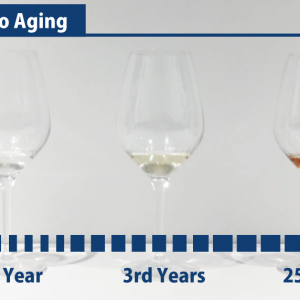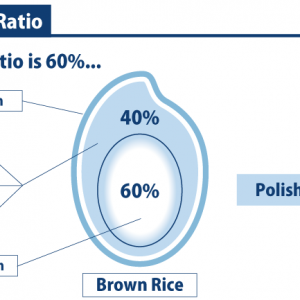
Nakadori (noun)
[naka-dough-ree]
Japanese characters: 中取り (中: middle, 取り: take, harvest)
What is Nakadori?
Nakadori, meaning “middle take” in Japanese, refers to the middle yield when pressing sake. It’s also referred to as nakagumi or nakadare. Nakadori sake is considered the finest take of the batch for its clarity, well-balanced aroma, and purity of flavor, and is often seen enlisted in competitions or on the labels of premium products.
Nakadori and the “Three Takes”
After a successful fermentation, moromi mash is pressed to separate sake from kasu using one of several methods. In each method, the first tap of sake is murky due to the broken-up particles of rice that drip out of the moromi first. This early yield is called arabashiri, or “rough flush,” and tends to have a bold and juicy flavor profile with an aromatic character. Specifically, arabashiri refers to the sake pressed out by the moromi’s own weight as it sits in the pressing tank — similar to what’s known as “free-run juice” in winemaking. The next yield is nakadori. Nakadori is the truest representation of a given sake’s intended flavors. Additional weight is finally introduced to squeeze the last drops of liquid out of the now putty-like moromi, yielding seme. The seme yield produces drier sake with a higher alcoholic content as the moromi continues to ferment during the pressing process. Although seme is generally less elegant, with more noticeable levels of less desirable flavors, its full-bodied flavor makes it an essential ingredient in blending.
Pressing Premium
This three-tiered process is usually reserved for batches that are pressed using the fune or shizuku methods; the first being a physical pressing by weight and the latter a gravity-based dripping that is reserved for the most premium batches.
Yabuta, the most commonly used pressing method, utilizes compressed air to mechanically separate the liquid from the solid almost completely. This rapid and forceful extraction of sake renders very little detectable difference between the “takes,” leaving brewers with no reason to go through the labor-intensive and cost-inefficient process of separating the yield.
Trying a Flight
Most sake on the market today are blended in one way or another. Some may be blends of several different batches, while others may be a blend of different press yields of the same batch. In the recent years, though, there has been an increase in brewers producing specifically arabashiri or nakadori sake, sometimes as limited products. This is a positive trend for sake enthusiasts as it allows an opportunity to taste the difference pressing phases have on sake — an absolute treat that, until now, was reserved only for the brewery workers. While breweries who offer the flight in its entirety (arabashiri, nakadori, and seme from the same batch) are still extremely rare even in Japan, we are hopeful more will join the bandwagon in the future.
Learn More>>Seimaibuai:SAKETIMES GLOSSARY
Free Sake Infographics:Feel free to download and use them freely from here to help you learn more about sake!





Comments